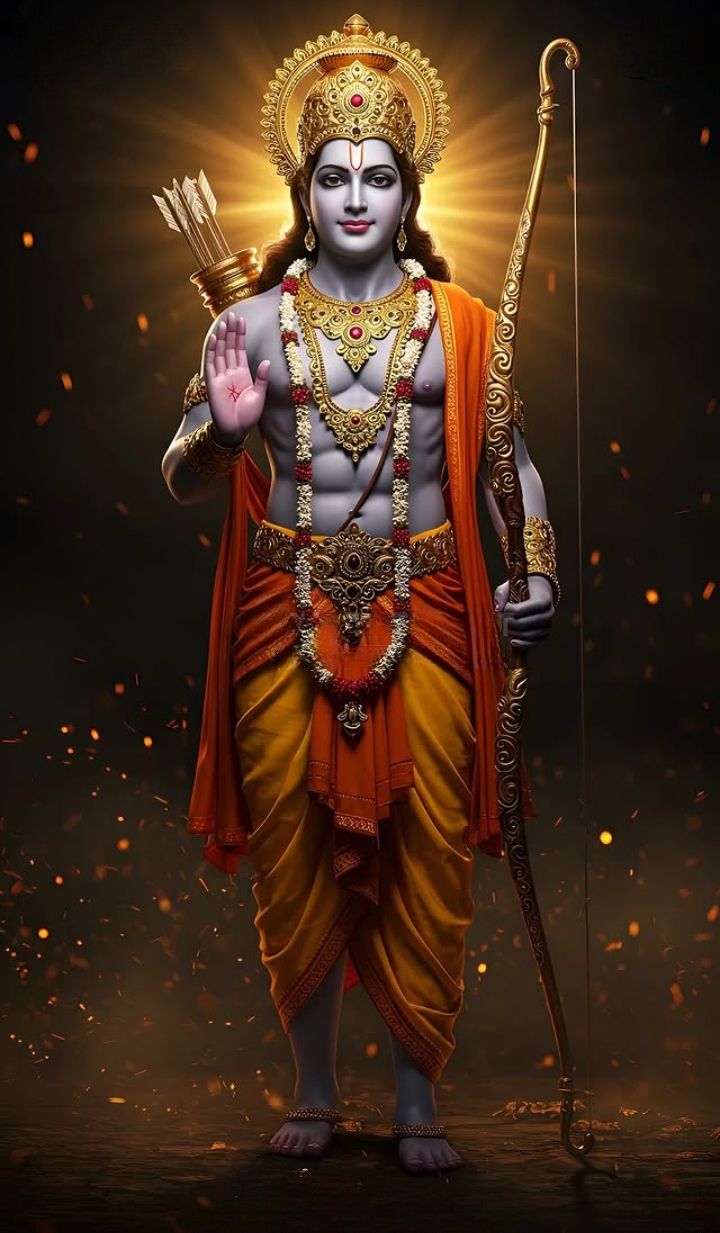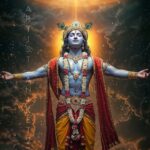8 Inspiring Facts About Lord Rama That Will Enlighten Your Soul
Lord Rama, also known as Maryada Purushottam, is one of the most revered deities in Hinduism. He is the seventh incarnation of Lord Vishnu and embodies virtue, dharma, courage, compassion, and moral perfection. His life story, chronicled in the Ramayana, offers timeless lessons for humanity on ethics, devotion, leadership, and resilience. This article explores Lord Rama’s history, fascinating facts, timeline, significance, FAQs, impact on daily life, and societal importance, written in a human-friendly and inspiring way.
Lord Rama
| Characteristics : | Morality, Virtue, Ideal son, Ideal king |
| Other Names : | Shri Ram, Ramachandra, Maryada Purushottama |
| Principal Scripture : | Ramayana |
| Consort : | Sita ji |
| Mula Mantra : | Om Sri Ramaya Namah |
| Rama Gayatri Mantra : | Aum Dasarathaye Vidmahe Sitavallabhaya Dheemahi Tanno Ramah Prachodayat |
History of Lord Rama
Birth and Early Life: Rama was born in Ayodhya to King Dasharatha and Queen Kaushalya in the Treta Yuga. He was destined to defeat evil forces and establish dharma on Earth.
Education and Skills: Trained in archery, warfare, governance, and scriptures, Rama exemplified intellectual, physical, and spiritual excellence.
Marriage to Sita: Rama married Sita, the daughter of King Janaka, symbolizing purity, devotion, and marital harmony.
Exile: Rama spent 14 years in exile in forests due to a promise made by his father, showcasing obedience, patience, and selflessness.
Vanara Alliance: With the help of Hanuman, Sugriva, and the Vanara army, Rama overcame obstacles to rescue Sita from Ravana, demonstrating courage and strategy.
Return to Ayodhya: After defeating Ravana, Rama returned to Ayodhya, establishing righteous governance (Rama Rajya), inspiring generations.
Interesting Facts About Lord Rama
Embodiment of Dharma: Rama is called Maryada Purushottam, representing moral perfection, duty, and righteous living.
Exemplary Leadership: His justice, wisdom, and compassion set the standard for ideal kingship.
Master Archer: Rama’s archery and combat skills were unmatched, symbolizing discipline and focus.
Devotion to Parents: His obedience and love towards King Dasharatha emphasize filial duty.
Role in Ramayana: Central to the epic battle against Ravana, Rama teaches the triumph of good over evil.
Symbol of Devotion: Sita’s unwavering love and Rama’s loyalty highlight mutual respect and devotion.
Hanuman’s Friendship: His relationship with Hanuman represents trust, loyalty, and spiritual bond.
Rama Rajya: His reign symbolizes peace, justice, prosperity, and ethical governance, inspiring human society.
Timeline of Lord Rama
Birth in Ayodhya: Treta Yuga, born to King Dasharatha and Queen Kaushalya.
Marriage to Sita: Married at King Janaka’s court in Mithila.
14-Year Exile: Left Ayodhya due to Kaikeyi’s demand, showcasing patience and virtue.
Battle of Lanka: Defeated Ravana with Hanuman and Vanara army, rescuing Sita.
Return to Ayodhya: Coronation as King, establishing Rama Rajya.
Legacy: Worshiped globally as an epitome of virtue, devotion, and righteous living.
Significance of Lord Rama
Lord Rama’s significance extends across spiritual, moral, and societal dimensions:
Spiritual: Inspires faith, devotion, and adherence to dharma.
Moral Guidance: Exemplifies truth, loyalty, courage, and righteousness.
Role Model: Guides humans in relationships, leadership, and ethical behavior.
Cultural Icon: Central to Ramayana performances, festivals like Ram Navami, and devotional arts.
Daily Life Impact: Encourages discipline, patience, courage, and devotion in personal and professional life.
Societal Influence: Promotes justice, ethical governance, and harmony through teachings and festivals.
FAQs About Lord Rama
Q1: Who is Lord Rama?
A1: Rama is the seventh avatar of Vishnu, symbolizing virtue, righteousness, and moral excellence.
Q2: What is the significance of Rama Navami?
A2: Rama Navami celebrates Lord Rama’s birth, marked by prayers, fasting, reading Ramayana, and community events.
Q3: What does Rama Rajya mean?
A3: Rama Rajya refers to a golden age of governance based on justice, prosperity, and ethical leadership.
Q4: Who were Rama’s key allies?
A4: Hanuman, Sugriva, Lakshmana, and the Vanara army assisted Rama in defeating Ravana.
Q5: How is Lord Rama worshiped?
A5: Through pujas, chanting of Ramayana verses, devotional singing, and observing festivals.
Impact on Daily Life
Lord Rama’s life lessons influence personal, ethical, and social development:
Devotion and Faith: Encourages spiritual growth, meditation, and ethical living.
Leadership and Ethics: Inspires responsible decision-making and moral leadership.
Problem Solving: His strategy in Lanka teaches resilience, planning, and courage.
Family Values: Promotes obedience, love, and loyalty towards family and relationships.
Community Harmony: Festivals and Ramayana recitations strengthen cultural identity and societal unity.
Observance and Wishing
Rama Navami: Birth anniversary celebrated with pujas, processions, and devotional readings.
Daily Worship: Reciting Ramayana verses or chanting “Jai Shri Ram” invokes blessings of courage, wisdom, and virtue.
Fasting and Prayers: Practiced by devotees to enhance spiritual growth and devotion.
Wishing: Seek Lord Rama’s blessings for ethics, courage, prosperity, and family harmony.
Community Celebrations: Promote ethical behavior, devotion, and cultural continuity.
Conclusion: Why Lord Rama Matters
Lord Rama represents the perfect balance of virtue, duty, courage, and devotion. His life demonstrates that adherence to dharma, ethical behavior, and selfless service leads to personal growth and societal harmony.
For individuals, Lord Rama’s teachings inspire resilience, discipline, and devotion. At a societal level, his values encourage justice, unity, moral governance, and cultural preservation. By following Rama’s example, humans can navigate life’s challenges with wisdom, courage, and ethical integrity, creating a harmonious, virtuous, and spiritually enriched society.
Quick Recap: 8 Inspiring Facts About Lord Rama
Embodiment of Dharma and moral excellence.
Exemplary leadership and justice.
Mastery in archery and combat.
Devotion to parents and family values.
Central figure in the Ramayana.
Inspires loyalty and devotion.
Friendship with Hanuman symbolizes trust.
Rama Rajya symbolizes ideal governance and societal harmony.








